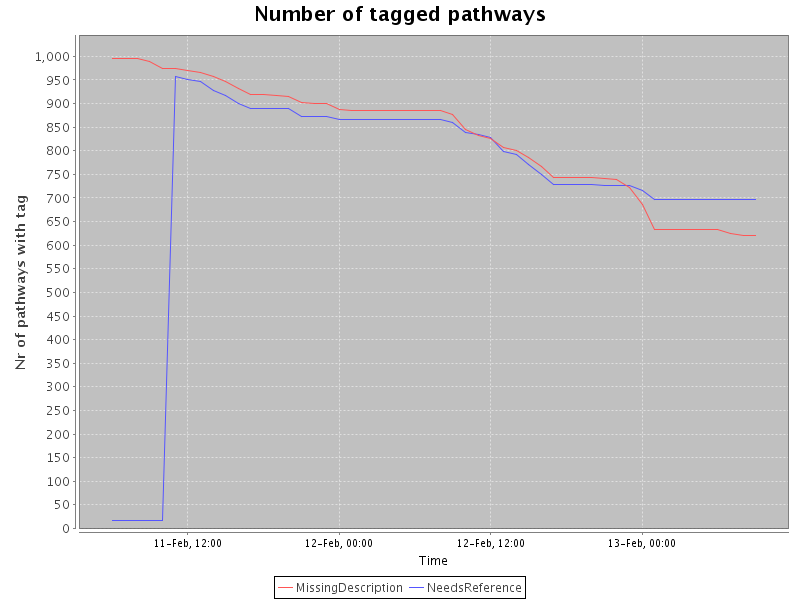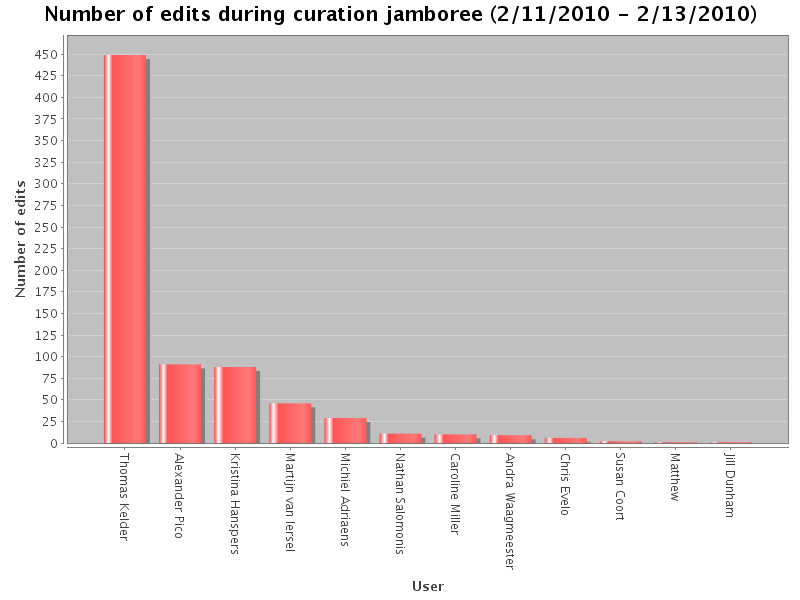WikiPathways content is growing nicely, but it’s not growing like one of those nice exponential curves that you see in the first slide of almost every bioinformatics presentation nowadays. We want exponential curves in our presentations too, dammit, so we want to get more people actively involved.
A big challenge for WikiPathways is to get people to take the first step, to get them over that initial hump and actually start participating. Certainly a lot of people are very interested in WikiPathways, but there is some hesitation to just start working on the content. It’s something we have to work on. Besides clearing technical hurdles, we try to gently help people, simply to get started.
As an experiment, we organized a dedicated curation jamboree, a focused effort to get together and crank through a list of curation tasks. We prepared documentation, contacted several mailing lists and harassed all our colleagues. We also put together a special chat channel where newcomers can get instantaneous contact and answers to quick questions. This event happened for two days in February.
So, was it a success? Yes, if you look at edit activity. Thomas made this graph of the number of pathways tagged with either “needs reference” (for pathways that don’t have any literature references) and “missing description” (for pathways that don’t have a nice description text). As you can see, the numbers dropped quickly during the two days of the curation event, by at least 25%. (ignore the initial jump in the blue line, that’s due to a bug in the data collection script). WikiPathways gained a lot of curated data in a short period of time.
The most active contributors were the usual suspects: Thomas, Alex, Kristina and me, the core WikiPathways team. But you can see in the graph below that other people joined in as well. Even if they did only a few curation tasks, that’s good enough. The most important thing is to get people to take the first step. So the graph below is misleading: participating really is more important than winning.

